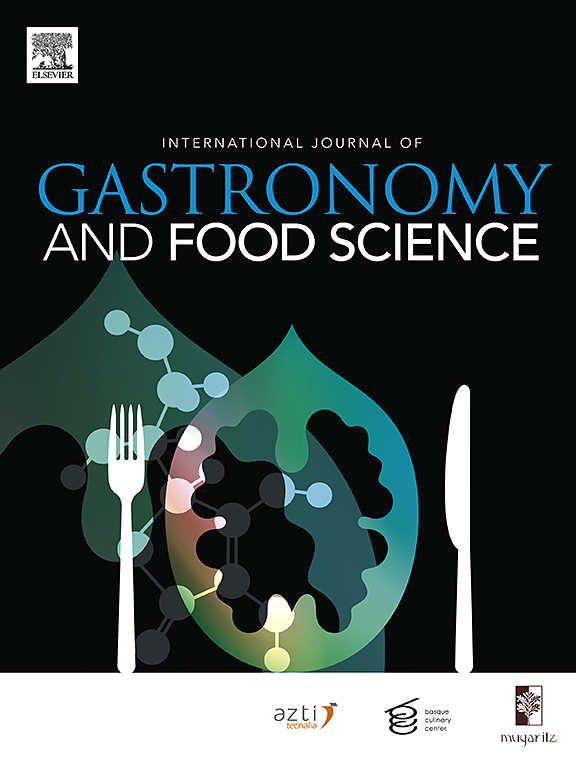“The arctic on the menu”: Introducing local seafood on Svalbard
IF 3.6
2区 农林科学
Q2 FOOD SCIENCE & TECHNOLOGY
International Journal of Gastronomy and Food Science
Pub Date : 2025-07-04
DOI:10.1016/j.ijgfs.2025.101241
引用次数: 0
Abstract
Svalbard is situated in the north between mainland Norway and the North Pole. In the coming 10 years, the Snow crab (SC) and Red king crab (RKC) are assumed to establish themselves in the fjords around Svalbard. We have explored conditions for utilizing local SC and RKC in culinary dishes/experiences in Svalbard. This will contribute to Svalbard's sustainability as most of the food consumed is transported from mainland Norway. Workshops, test fishery, survey of the tourists' interest, and development of culinary dishes were performed. Furthermore, we have described the biological, practical, and regulatory conditions for local harvesting, processing, and live holding of the crabs in Svalbard. The survey revealed that most tourists did not know SC or RKC. Still, they were interested in local food, including crabs. Challenges have been identified and solutions proposed to ensure that when SC and RKC are present in the Svalbard fjords, a local, sustainable pot fishery can provide locally caught crabs, offering tourists a “taste of the Arctic”.
“菜单上的北极”:介绍斯瓦尔巴群岛的当地海鲜
斯瓦尔巴群岛位于挪威大陆和北极之间的北部。在接下来的十年里,雪蟹(SC)和红王蟹(RKC)预计将在斯瓦尔巴群岛周围的峡湾定居下来。我们探索了在斯瓦尔巴群岛烹饪菜肴/体验中使用当地SC和RKC的条件。这将有助于斯瓦尔巴群岛的可持续性,因为大部分食物都是从挪威大陆运来的。工作坊、试验渔业、游客兴趣调查和烹饪菜肴的开发进行了。此外,我们还描述了斯瓦尔巴群岛螃蟹当地收获、加工和活养的生物、实际和监管条件。调查显示,大多数游客不知道SC或RKC。尽管如此,他们还是对包括螃蟹在内的当地食物很感兴趣。已经确定了挑战并提出了解决方案,以确保当SC和RKC出现在斯瓦尔巴峡湾时,当地可持续的锅渔业可以提供当地捕获的螃蟹,为游客提供“北极的味道”。
本文章由计算机程序翻译,如有差异,请以英文原文为准。
求助全文
约1分钟内获得全文
求助全文
来源期刊

International Journal of Gastronomy and Food Science
Social Sciences-Cultural Studies
CiteScore
5.30
自引率
10.50%
发文量
170
审稿时长
45 days
期刊介绍:
International Journal of Gastronomy and Food Science is a peer-reviewed journal that explicitly focuses on the interface of food science and gastronomy. Articles focusing only on food science will not be considered. This journal equally encourages both scientists and chefs to publish original scientific papers, review articles and original culinary works. We seek articles with clear evidence of this interaction. From a scientific perspective, this publication aims to become the home for research from the whole community of food science and gastronomy.
IJGFS explores all aspects related to the growing field of the interaction of gastronomy and food science, in areas such as food chemistry, food technology and culinary techniques, food microbiology, genetics, sensory science, neuroscience, psychology, culinary concepts, culinary trends, and gastronomic experience (all the elements that contribute to the appreciation and enjoyment of the meal. Also relevant is research on science-based educational programs in gastronomy, anthropology, gastronomic history and food sociology. All these areas of knowledge are crucial to gastronomy, as they contribute to a better understanding of this broad term and its practical implications for science and society.
 求助内容:
求助内容: 应助结果提醒方式:
应助结果提醒方式:


